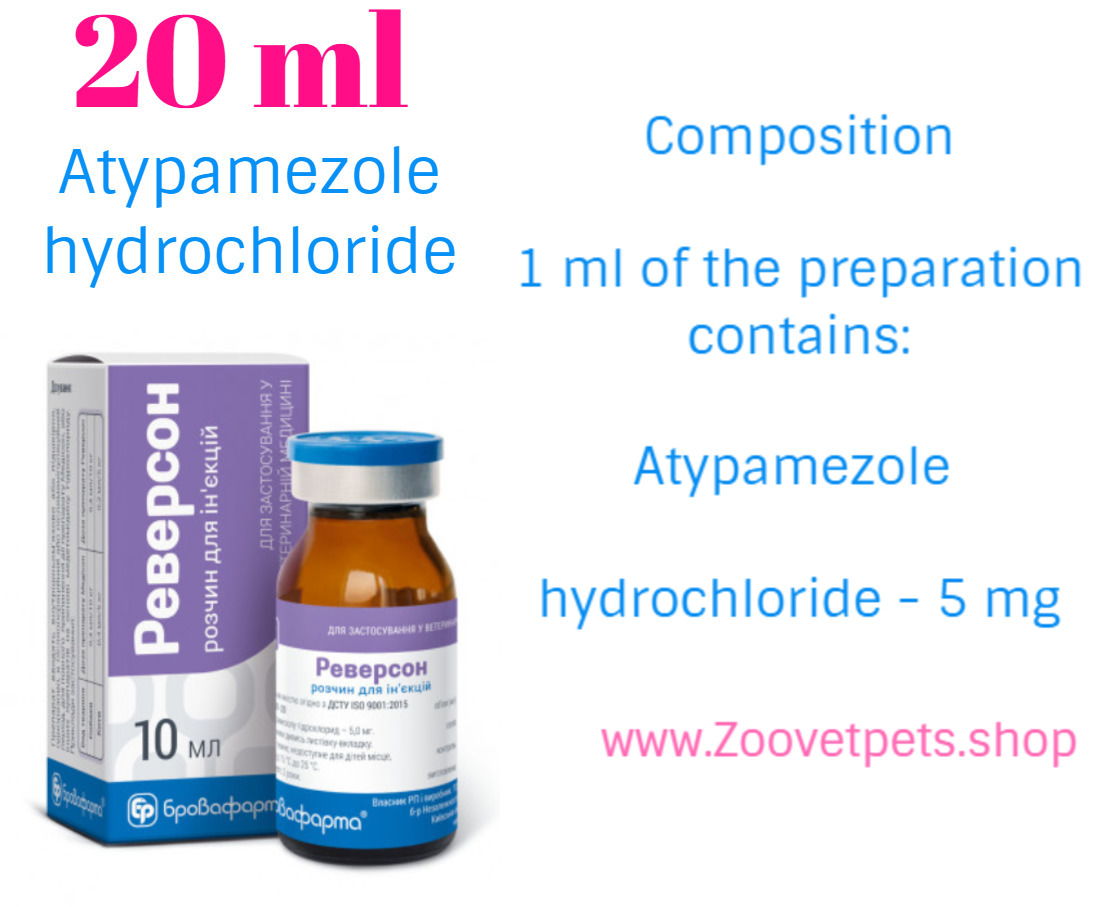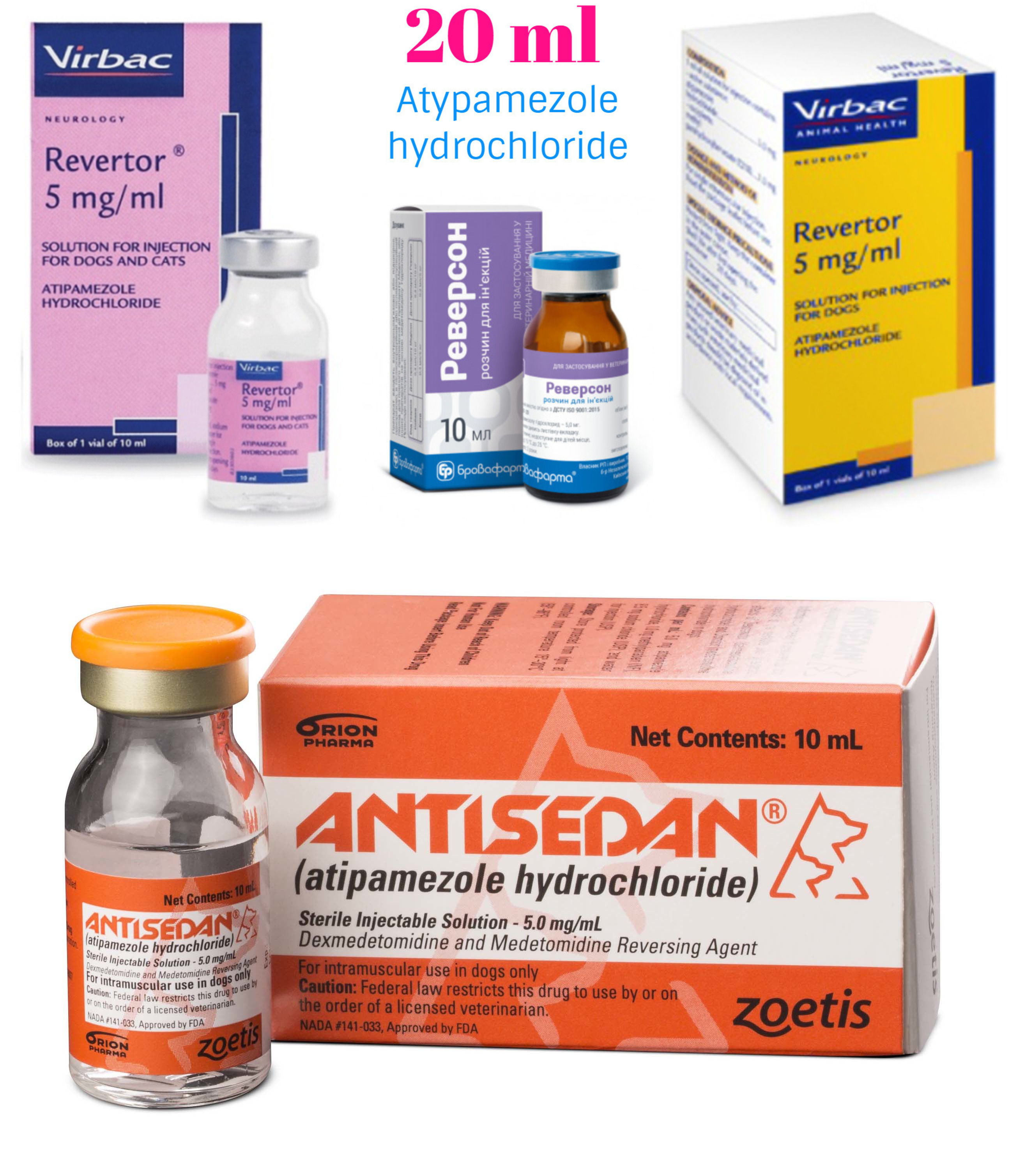Description
Description
The liquid is colorless, transparent.
Composition
1 ml of the preparation contains:
Atipamezole hydrochloride – 5 mg
Pharmacological properties
Atipamezole hydrochloride is a selective blocker of alpha-2-adrenoreceptors that stimulates the release of noradrenaline, which is the main neurotransmitter in the central and peripheral nervous system.
This leads to stimulation, excitation of the sympathetic nervous system, stops sedative, analgesic and other effects on the cardiovascular and respiratory systems of honeydine hydrochloride or dexmedetomidine hydrochloride.
After intramuscular injection is quickly absorbed, the maximum concentration in plasma is reached in 10-15 minutes after injection. The volume of distribution (Vd) is 1-2.5 l/kg, half-life is 2-3 hours.
Atypamezole hydrochloride is metabolized in the liver, a small amount is methylated in the kidneys. Metabolites are mainly excreted in urine.
Readings
It is used for dogs and cats for complete cessation of sedative, analgesic and side effects on the cardiovascular and respiratory systems of drugs such as medetomidine hydrochloride.
Method of administration and dosage
The drug is administered intramuscularly or subcutaneously, once, after surgery or other manipulations.
The optimal dose Atipamezole hydrochloride correlates with the amount of drug other means on the basis of medetomidine hydrochloride thus: for dogs – 1: 1, for cats – 1: 2 (dose Atypamezole hydrochloride half the dose medetomidine hydrochloride ).
Examples of calculating doses for various animal species are shown in the table.
| Animal species | Madison dose | Reverson dose |
| Dogs | 0.4 ml per 22lb (10 kg) body weight | 0.4 ml per 22lb (10 kg) body weight |
| Cats | 0.4 ml per 1.1lb (5 kg) of body weight | 0.2 ml per 1.1lb (5 kg) of body weight |
Atipamezole hydrochloride quickly returns the animal to full consciousness and shortens the period of possible cardiovascular depression and hypothermia.
Usually, the drug begins to work within 5-10 minutes after administration. In cases where the animal continues to be depressed, Atypamezole hydrochloride can be administered in the same dose again 10-15 minutes after the first application.
Cautions
Occasionally, the drug causes vomiting, drooling, shortness of breath, bowel movements. There may be isolated cases of hyperactivity and tachycardia, which quickly pass.
Cats may experience hypothermia, so after the drug is administered, the animal should be placed in a quiet room.
If the animal is treated with a combination of medetomidine and butorphanol or ketamine, Atypamezole hydrochloride will only stop the action of medetomidine. In this case, Atypamezole hydrochloride should be administered no earlier than 30-40 minutes after sedation. If Atypamezole hydrochloride is applied earlier, convulsions may occur.
Nonspecific central stimulants (for example, 4-aminopyridine) enhance the effect of the drug.
Contraindications
Do not apply to animals with hypersensitivity to the active substance of the drug, pregnant, lactating and productive animals.
Storage conditions
In a dry, dark, inaccessible to children place at temperatures between 15-77F (+15 to +25 ° C).
After opening the bottle, use the product within 28 days.
Shelf life from the date of manufacture – 2 years.











Reviews
There are no reviews yet.